In light of everything going on in 2020, the 7th annual Hackaday Prize is devoted to nurturing ideas that could literally help change the world. In a first, we partnered with several nonprofits to help identify some of today’s most difficult problems, ranging from conservation and disaster relief to the need for advanced assistive technology. With over $200,000 up for grabs, including microgrants to help teams work full-time on their projects, this year’s competition was designed to help bring critical solutions to fruition which otherwise might never see the light of day.
But it hasn’t been easy. The global pandemic has made it far more difficult to collaborate on projects in the way we’re all used to, parts have become harder to source, and many makers found themselves so engaged with grassroots efforts to combat COVID-19 that they found little time for anything else. But despite all of this uncertainty, we received hundreds of incredible entries from all over the globe.
It’s never easy to select who will move on to the next round of the competition. But with the help of our nonprofit partners, the panel of expert judges was able to whittle the list of entries down to the 34 finalists that produced some of the most impressive and impactful ideas the Hackaday Prize has ever seen. Let’s take a look at just a few of the projects that will be vying for the top prizes in November.
Modern Housing Solutions
CalEarth is dedicated to “providing solutions to the human need for shelter through research, development, and education in earth architecture”, so they challenged designers to find new ways to tackle problems related to building sustainable homes. Projects competing in this category should be solutions aimed at improving the overall efficiency of dwellings as it pertains to energy harvesting, water collecting, lighting, heating, and cooling.
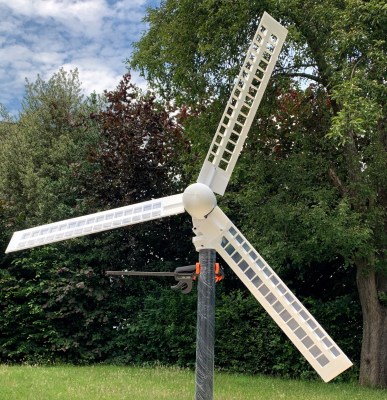
The Libre Solar project looks to make using renewable energy sources more affordable and reliable through open source hardware. Their battery management system and charge controller allow for wind and solar power to be efficiently harvested, stored, and distributed in off-grid and grid-tied applications. In a similar vein, the WinDIY is a mostly 3D-printed three-bladed horizontal wind turbine with active pitch adjustment and braking systems to ensure it’s always generating as much power as possible under the current wind conditions.
To better combine natural and artificial light sources, the Lighting Color Control with Commodity Lamps project proposes using ambient light sensors and spectrophotometers in addition to more traditional occupancy sensors and dimmers. In another project, rays from the sun would be used to provide light and warmth inside of a home through a series of articulated mirrors. By tracking the sun as it moves across the sky and bouncing light through the building, this system should reduce the need for artificial lighting during the day.
Protecting the Planet
Earth is the only home we have, so it’s humanity’s responsibility to do whatever we can to take care of it. Which is why the challenges from Conservation X Labs focused on conservation efforts such as finding ways to combat invasive species and developing technology to help monitor and protect marine life.
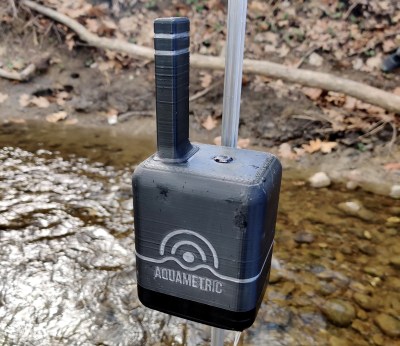
One way to accomplish these goals is by making the necessary equipment cheaper and more accessible. The Aquametric project aims to produce a low-cost sensor platform that can be used to monitor rivers and streams. Its sensors can detect variables such as water temperature, flow rate, and conductivity, and an onboard cellular modem means it can provide data continuously without having to be physically retrieved.
For research under the water’s surface, the Aruna ROV promises to be cheaper and more modular than what’s currently on the commercial market. This project includes the software and hardware necessary to drive a submersible vehicle, as well as a baseline design for the craft itself. Using 3D printed and off-the-shelf components, the cost of building one of these underwater research and exploration craft should be within the means of small communities and citizen scientists.
Hacking on the Front Lines
If there’s an ecological disaster that cuts a community off from the rest of the world, simply ordering the supplies you need and waiting for them to arrive isn’t an option. That’s why Field Ready is devoted to the use of rapid manufacturing in remote areas for humanitarian purposes. They challenged designers to come up with techniques and tools that can be used in the field, with a specific focus on devices which could cure UV adhesives.
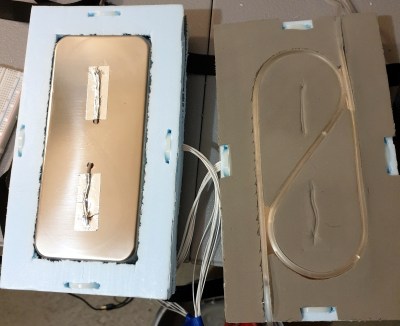
The UVA is essentially a high-power UV flash light, but it has a number of features which make it safer and easier to use for manufacturing. There’s a small display that shows a curing countdown timer and a distance sensor is used to indicate when the light is the optimal distance from the target. There’s also support for additional tool heads that use the same battery pack.
Approaching the problem from another angle, the OpenFluidWarmer is an open source piece of medical equipment designed to be cheap and easy to manufacture where it’s needed. By carefully controlling a heating element inside its insulated chamber, the OpenFluidWarmer ensures that refrigerated IV fluids are brought to the patient’s body temperature before they’re injected to reduce the risk of hypothermia.
High Tech Assistance
United Cerebral Palsy of Los Angeles tasked hackers with creating open source assistive devices usable by those with cerebral palsy and other physical challenges to help them live more full and independent lives.
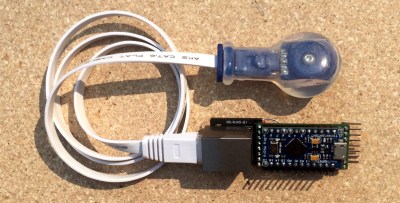
Ideas like this robotic arm designed to assist those who have difficulty feeding themselves, can greatly improve the user’s self-esteem and reduce the daily burden on family members or other caregivers. The BYTE is a hands-free mouth interface for the computer usable even by those with profound mobility limitations that’s more responsive and extendable than what’s currently on the market.
The Hoverboards for Assistive Devices project seeks to use commercial self-balancing scooters as a way to motorize wheeled assistive devices. Electric wheelchairs for children are expensive and get outgrown quickly, but with a generic drive system based on a hoverboard and controlled with a simple joystick, custom powered mobility devices could be built quickly and cheaply.
Boundless Creativity
Not all of the Hackaday Prize entries fit into the predefined categories created by our nonprofit partners. The creative minds behind these entries used their unique talents to come up with devices that solve real-world problems of their own choosing.

The Sky Anchor was designed as a flying connectivity relay that could be used to establish high-speed data links in areas that have been hit by a natural disaster or where no telecommunications infrastructure is in place. To help facilitate person-to-person communications in a disaster scenario, the ARMACHAT and ARMAWATCH use LoRa mesh networking to transmit messages between each other. With multiple physical form factors and full hardware QWERTY keyboards, these devices offer a flexible way to keep in touch at long distances.
In an effort to address ventilator shortages due to the COVID-19 pandemic, the DP Ventilator hopes to address some of the shortcomings of existing DIY designs by motorizing a manual resuscitator. By using these relatively cheap and plentiful single-use breathing devices as the interface between the patient and the machine, this design never directly handles the air being pushed into the lungs.
It’s Not Over Yet
The finalists still have another month to put the finishing touches on their creations before the winners are selected in early November. It’s going to be extremely difficult to select the final ten winners this year, and the competition will likely come down to technical aspects such as the project’s overall documentation and suitability for production. To be considered in the final round, each project will also need to have a comprehensive video explaining the concept and detailing the progress made over the last several months.
This final stretch is where this community can really shine. Feel free to drop by the Hackaday.io pages for these projects and share your feedback, tips, or ideas. You might have the solution for a problem they’ve been struggling with, getting them that much closer to crossing the finish line.

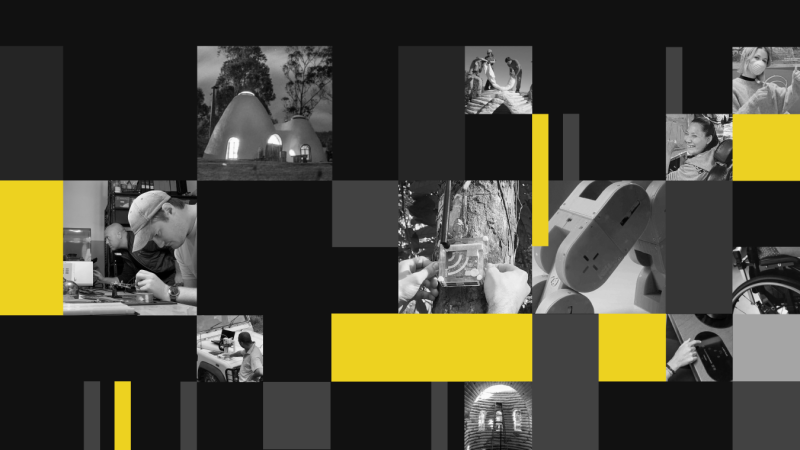


















+1 for ArmaChat! It is an inspiring project in the sense that it proves that we can do amazing things without spending a lot of cash or having access to complicated machinery.
+1 Me2
Yep, that one!
Thanks for ARMACHAT selection
Active pitch is more a disadvantage than an advantage for small windturbines. +30 years of experience of the DIY-windturbine community (Scoraigwind, Otherpower,..) has shown it adds little performance gain above fixed blades that are twisted along their length. It comes with the disadvantage of being prone to damage as it introduces A LOT of extra moving parts that can fail. Please take a look at the Propel-E 450 from From Waste To Wind, which has incorporated these design principles: https://hackaday.io/project/174428-propel-e-450-a-very-powerful-windturbine
Well they’re finalists too, so I guess we’ll find out.
I don’t know why WinDIY is in the finals because the design is fundamentally flawed (the generator’s power is not matched to that of the blades at all, achieving maybe 10% of the max achievable efficiency). Luckily it has brakes or it would self-destruct in no time (normally the generator holds the RPM low during operation). Seems like they are trying to reinvent the wheel. Props for the effort though, the design of the active pitch ‘looks’ nice, so maybe could be used to educate students on how things like that work.
Super appreciative of both the recognition in general and specifically the mention above regarding my team’s current project, “Lighting Color Control with Commodity Lamps.” Our excitement around this announcement is exceeded only by the satisfaction that comes from feeling understood – you *got* us, Hackaday!